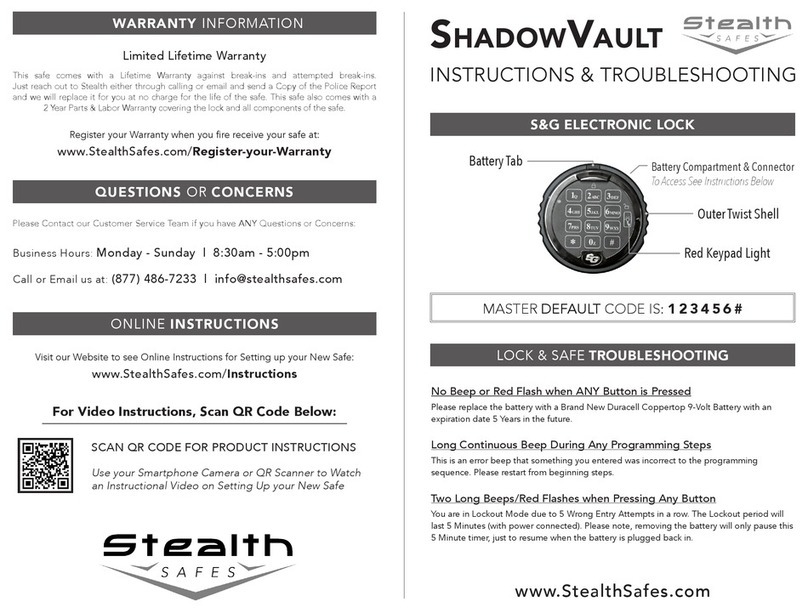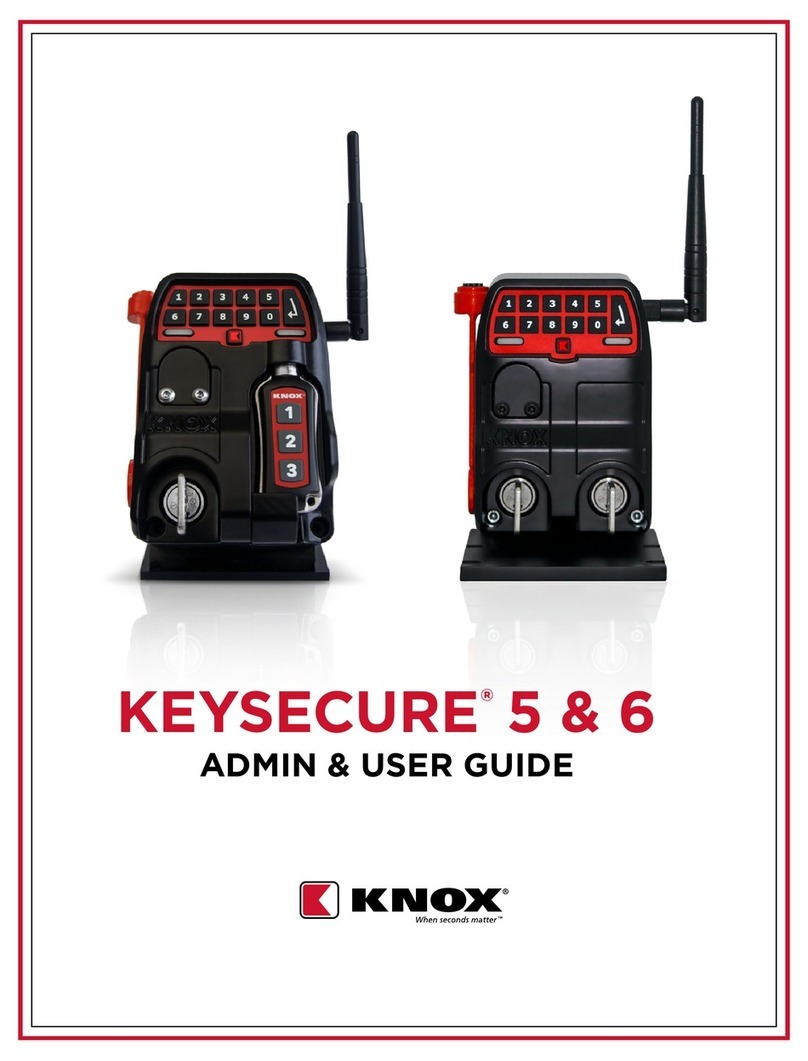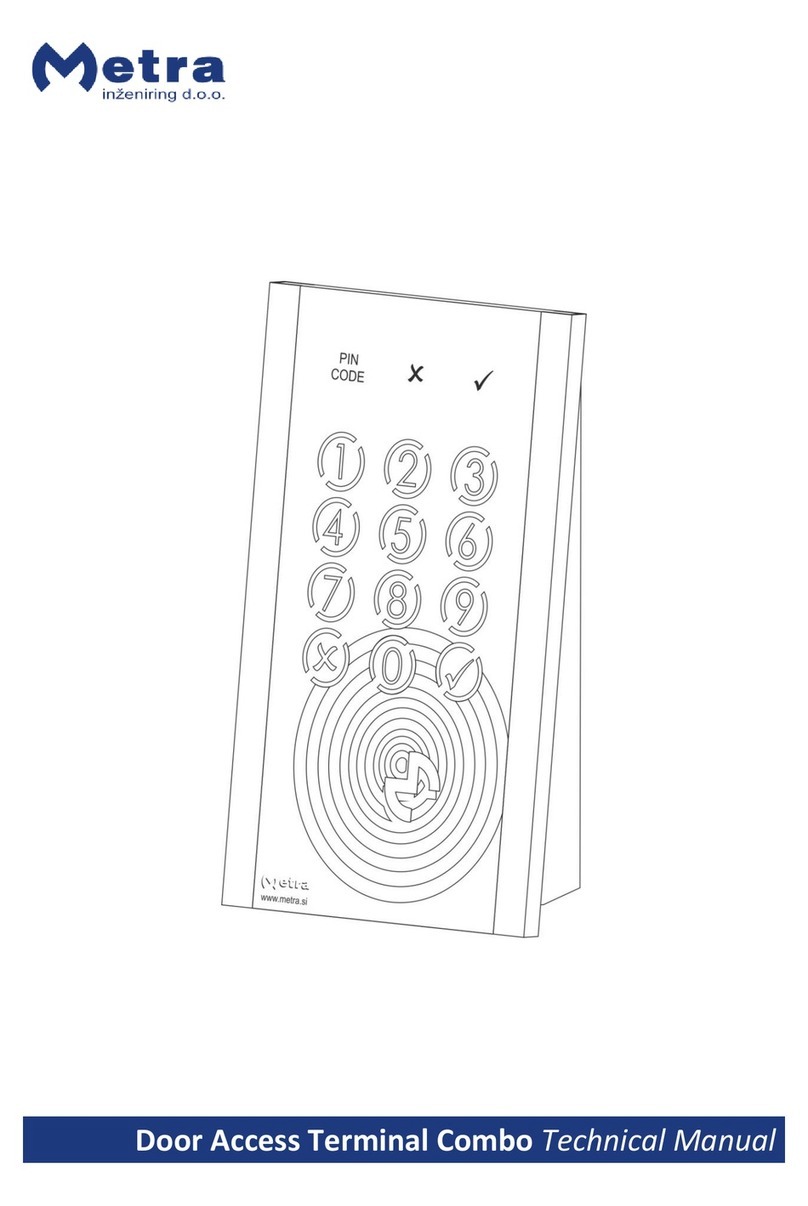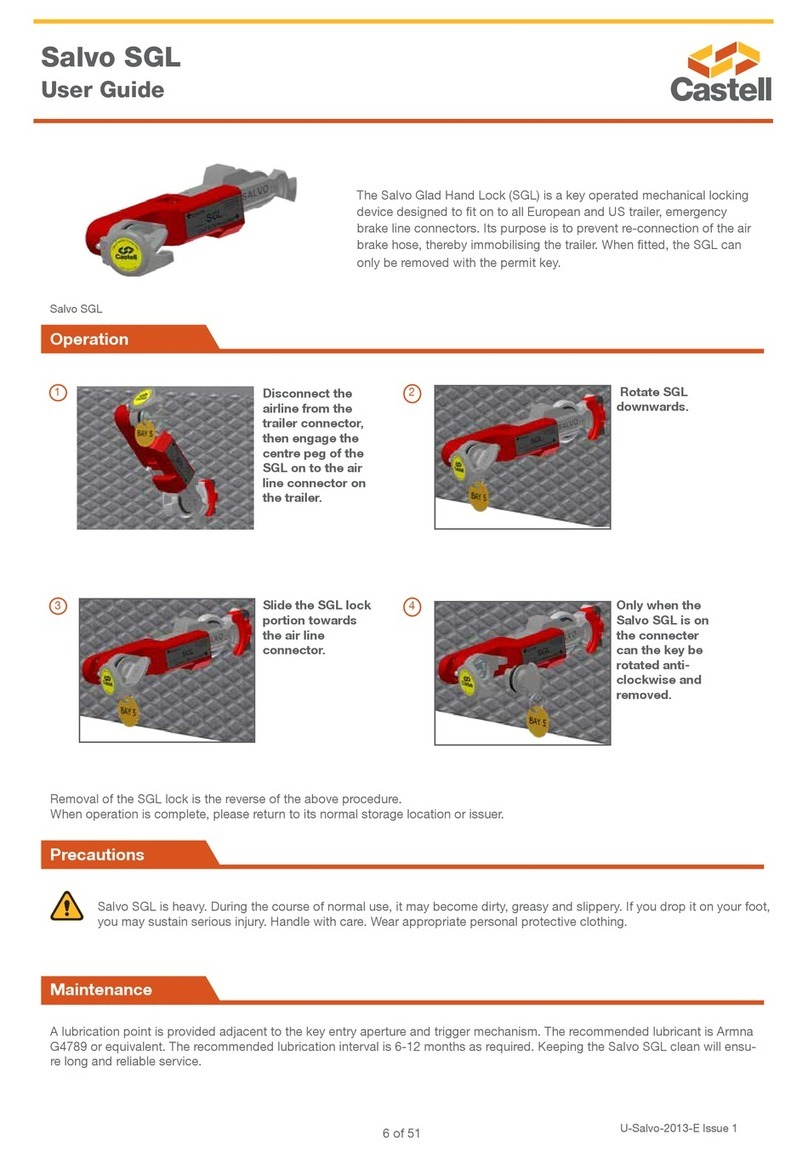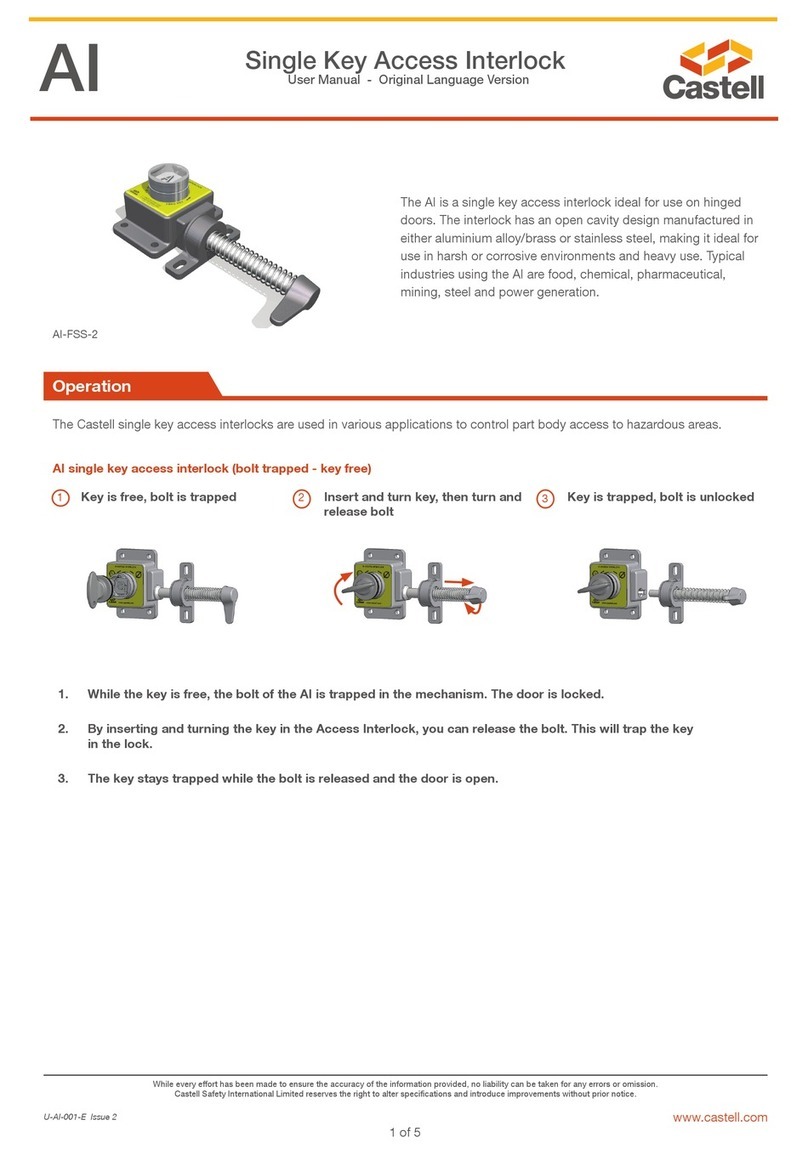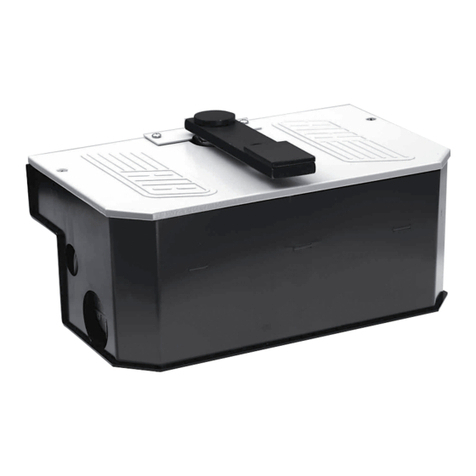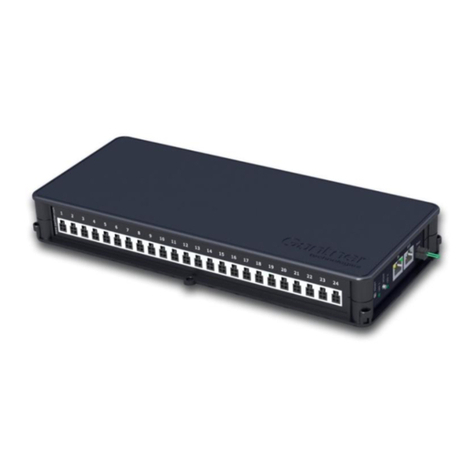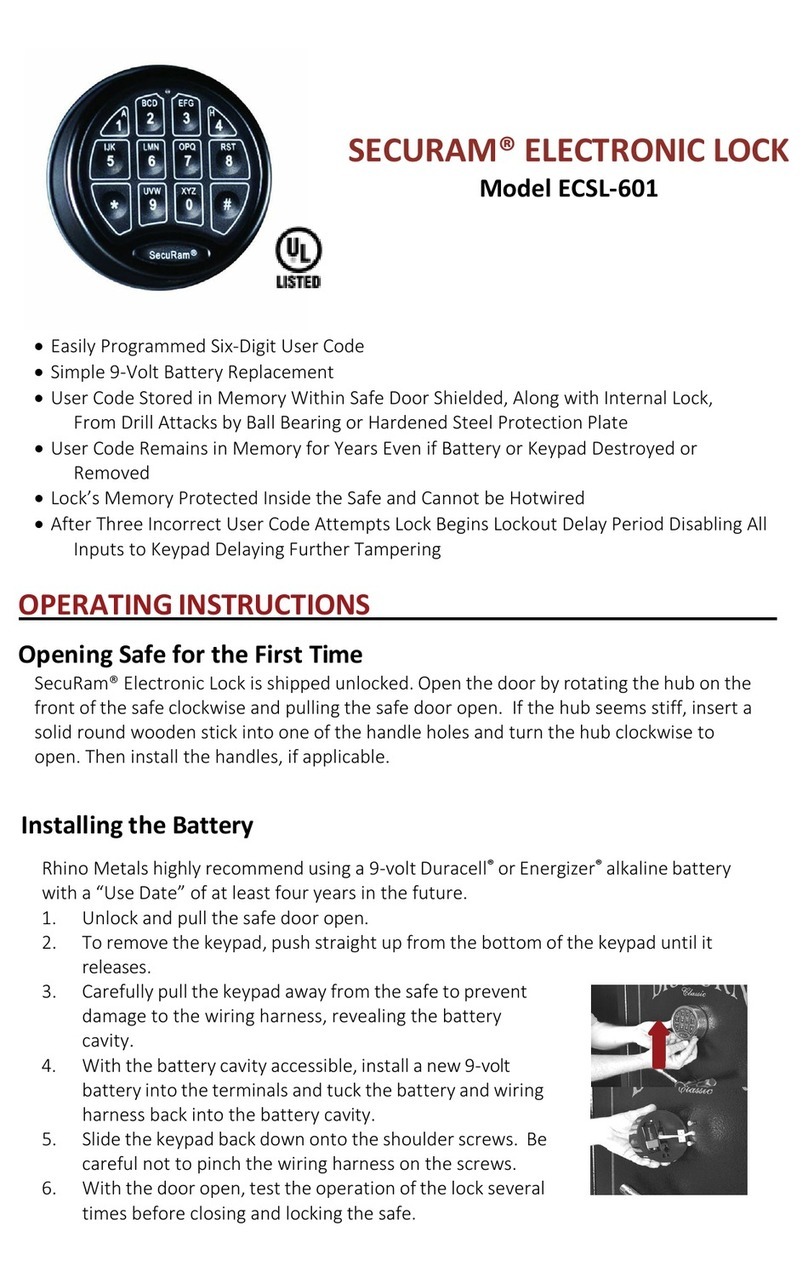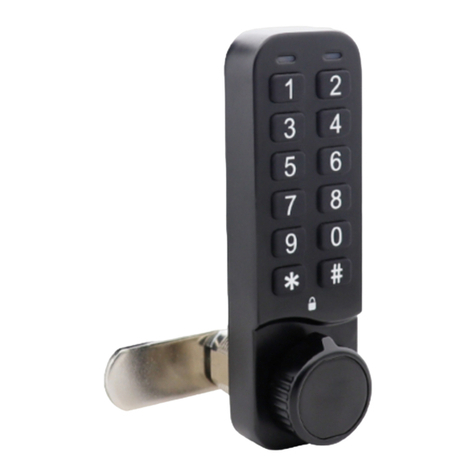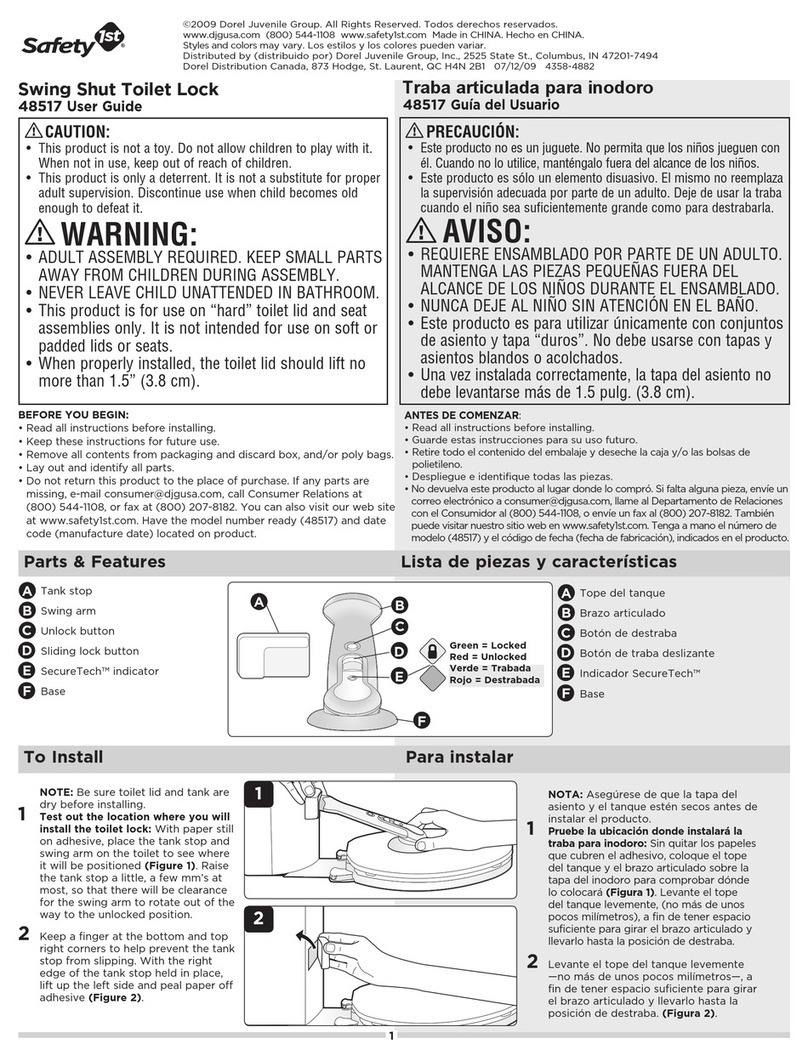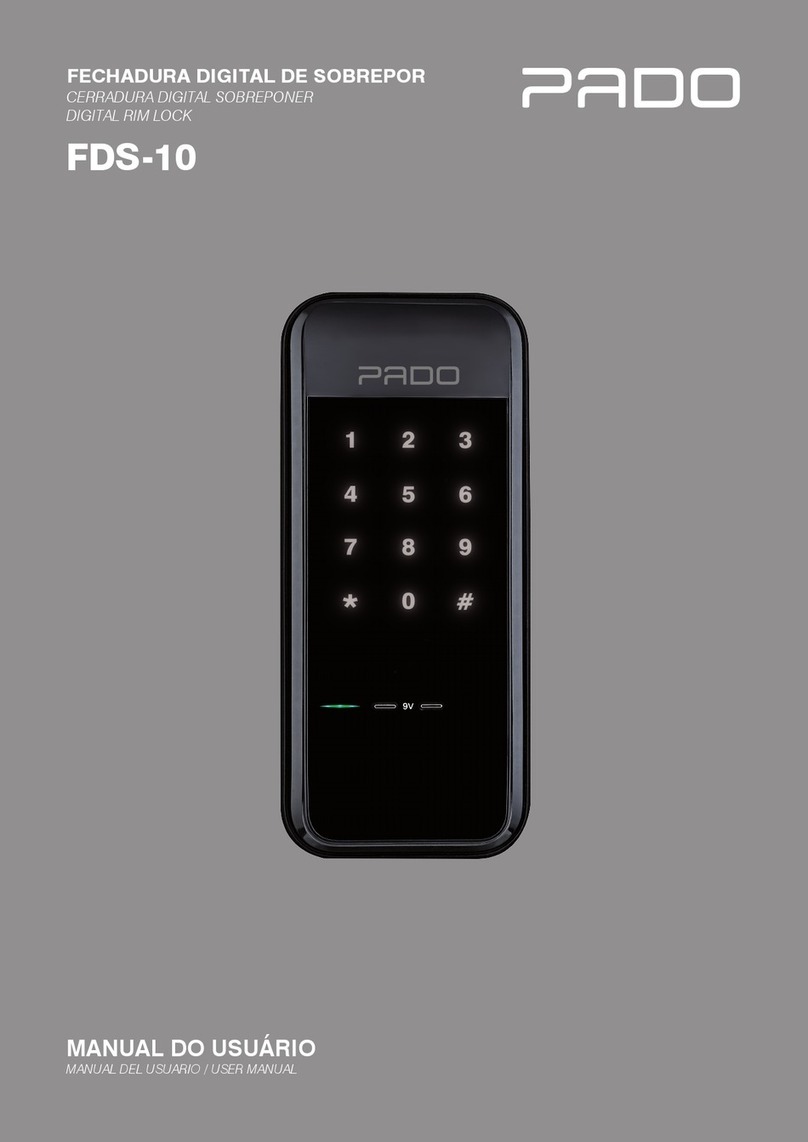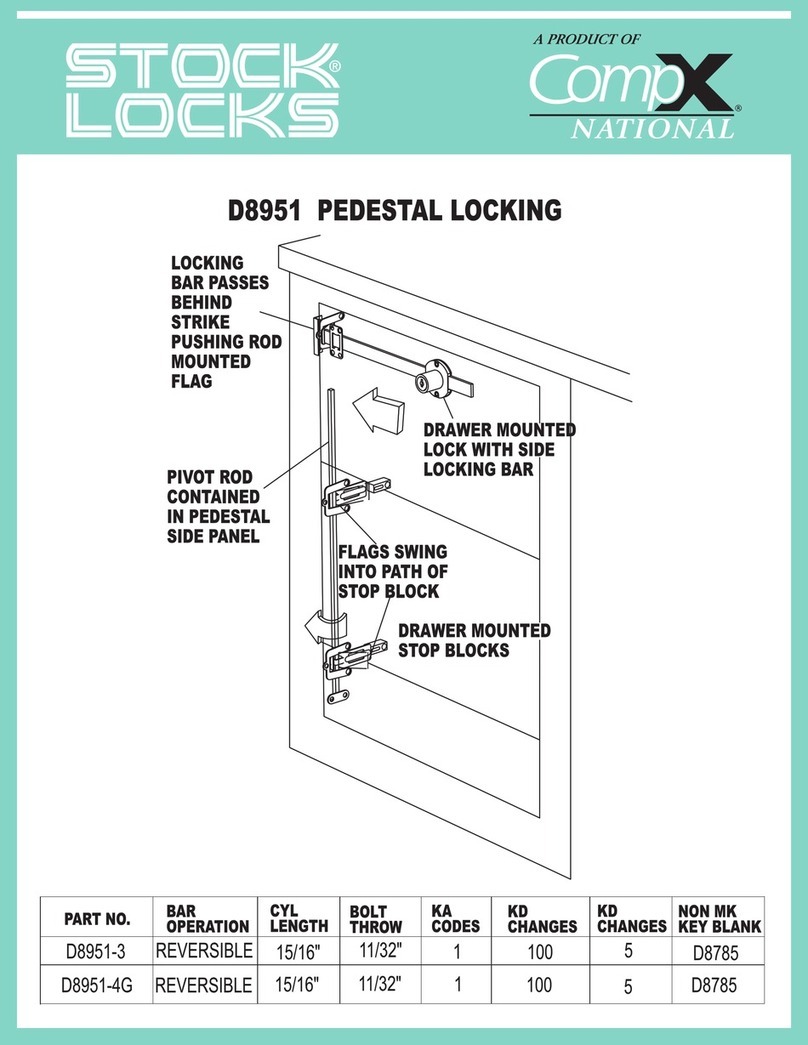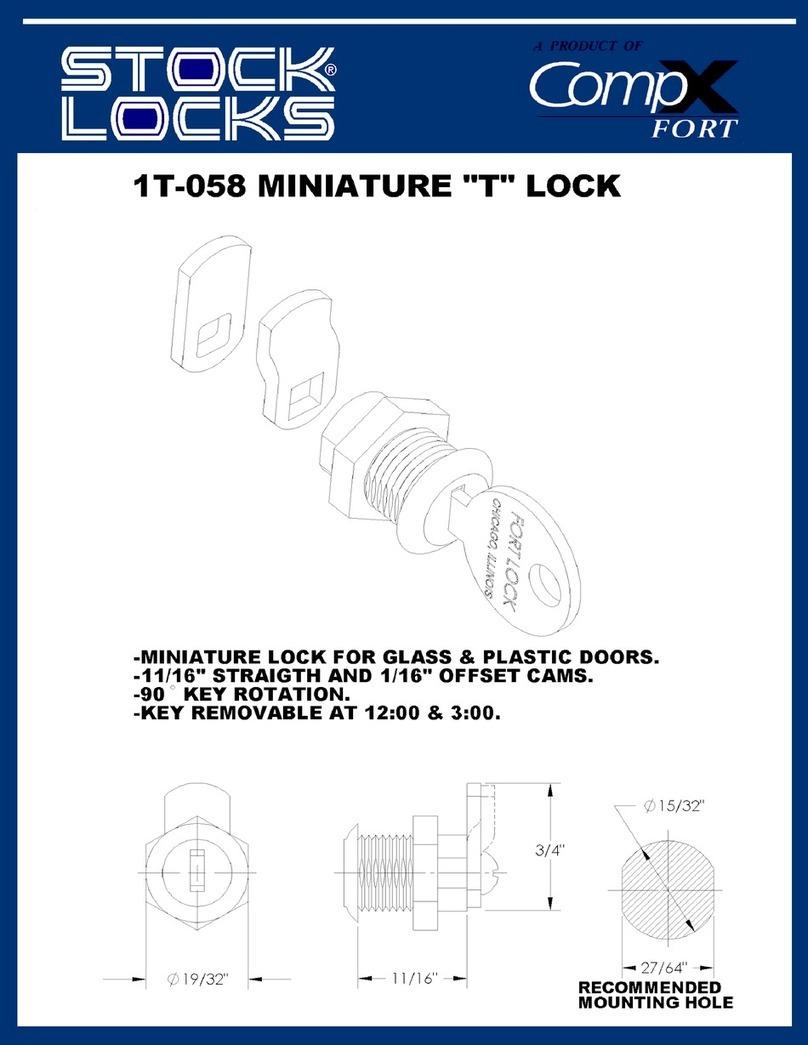The Salus automatic access interlock should be used as a part of a safety system to allow safe access to potentially hazardous
and dangerous areas.
The Salus interlock is not designed for security purposes, such as a safe or external access to buildings.
The Salus interlock has been tested to vibration, in accordance with BS EN 50155:2001 & IEC 61373:1999-01 up to a maximum
of 150Hz). If the unit is to be subjected to vibration levels higher than this, then anti vibration pads should be used.
No hazardous substances were used in the manufacture of this product. The product can be disposed of in standard waste.
Note : The Salus product contains a locking mechanism which is activated by means of magnetic force. It is not recommended that this
product be used in environments where magnetic dust or debris is present. If there is any doubt as to the suitability of this product in a
particular application, please contact your local Castell representative for further clarification and to identify a suitable alternative.
Usage
Installation
The mounting bracket should be mounted on the static frame or the door. The mounting should be positioned so that bolt
engagement is made before the door touches the frame. The Salus unit is then presented to the mounting plate at an angle
and clipped on by engagement with the internal tangs. Once the unit is clipped on, the two dog screws are tightened (using the
security bit supplied), trapping the mounting plate and securing the unit for use. The bolt should then be aligned and mounted,
using suitable fasteners. The design of the bolt allows for some misalignment to the housing. Please refer to drawing on page 4
for more installation details.
IMPORTANT:
The interlock should be mounted using anti-tamper fasteners to prevent unauthorised removal.
The Salus access interlock must be installed by a competent and qualied person who has read and understood these
instructions. Please retain this document in your technical le.
Maintenance
Periodic visual checks should be carried out by the site manager / safety ofcer.
Do not lubricate lock barrel with oil or grease, use CK Dry Powder Graphite if necessary.
In case of detected defects please contact your nearest Castell Support Department for further actions.
Please see Contact section for contact details.

